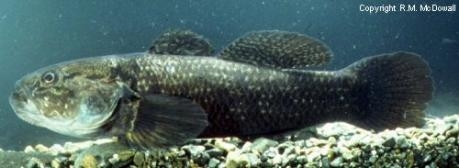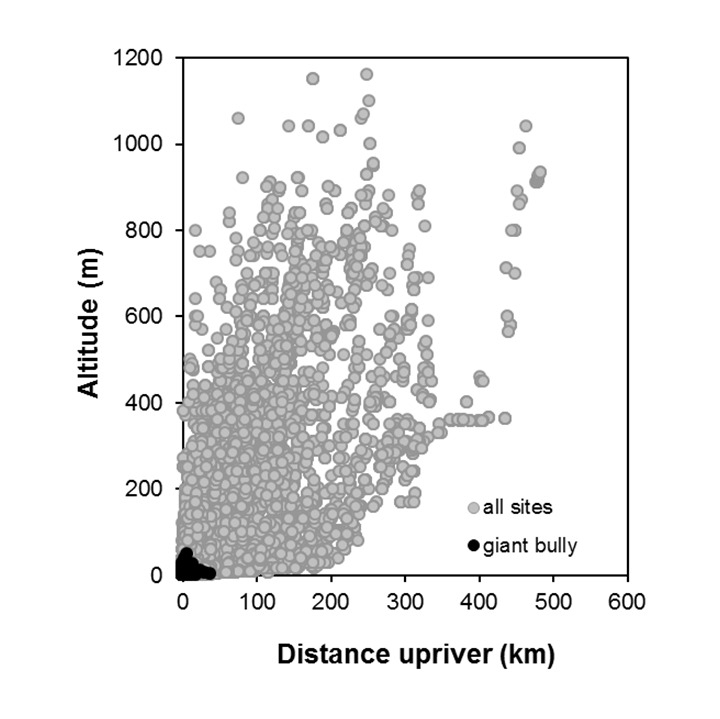Giant bully
Gobiomorphus gobioides (Valenciennes, 1837)

As its name implies, the giant bully is the largest member of the Eleotridae family in New Zealand. Specimens of over 250 mm in length have been reported, although fish in the 120-150 mm range are more common. It is virtually impossible to distinguish the giant bully from the common bully unless you count the number of spines in the first dorsal fin. In giant bullies there are always six spines and in common bully there are usually seven. However, these are difficult to count in the field unless you have some forceps because the spines tend to collapse when the fish is out of the water. Size alone is not a good indicator because common bullies can also grow to 150 mm.
The life cycle of giant bullies is somewhat of a mystery. The larvae are thought to have a marine phase, but no juvenile giant bullies have ever been positively identified. In fact, few giant bullies of less than 80 mm have been recorded. Whether small giant bullies have not been distinguished from common bullies or whether they live elsewhere is not known. The adults are never found more then a few kilometres inland and it is possible that they may spend a long period in estuaries before moving into fresh water.
Giant bullies have been found in most regions in New Zealand. The slow flowing coastal habitats they live in are difficult to sample although bullies will readily enter fyke nets and traps. To date there have been no studies of this fish so there is no knowledge of its ecological requirements and role.
![Giant bully - distribution map [2024]](/sites/default/files/styles/wide/public/2024-02/Giant%20bully.jpeg?itok=A1_a0Rm9)

